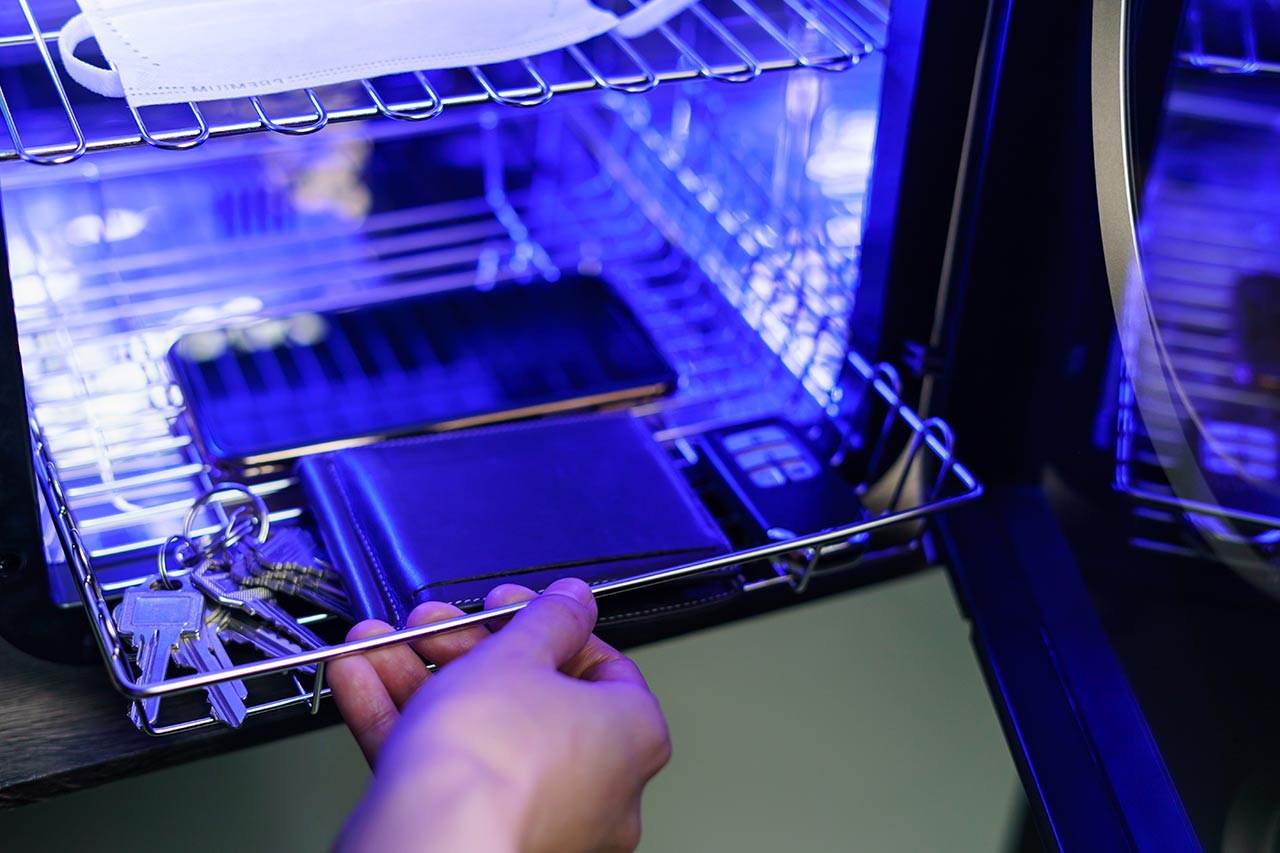CES 2021 series – Disinfection devices: should we expect a revolution in our lifestyles?

Since the start of the coronavirus health crisis, solutions for disinfecting the surfaces of objects and public places have been sought and implemented to limit the spread of the virus as much as possible. Alcimed looks back on 3 disinfection devices exhibited at the Consumer Electronics Show (CES) which was held virtually at the beginning of the year. Should we expect a revolution in our lifestyles? At a time when the coronavirus can be found anywhere in the air, in waste water or on any object and surface touched by anyone, health protocols are being reinforced. In general, regular hand washing and respect for barrier gestures have become our daily routine. But technological advances in disinfection could make our lives easier!
This year the CES, under the banner of the COVID-19 pandemic, presented numerous innovations aimed at disinfecting objects or living areas. The evolution of disinfection techniques, which is necessary in many sectors, will undoubtedly be a key factor for health security at both individual and collective levels. Our team has chosen three innovative disinfection devices in particular.
1. The Oblio smartphone charging station by Lexon
The French design company Lexon has developed a recharging station for smartphones, called Oblio. Equipped with UV-C LED technology, it eliminates all micro-organisms present on the screens. Simply place your smartphone in this sterilizer-charger for 20 minutes to clean your smartphone and 3 hours for a full recharge.
The effectiveness of Oblio has been validated in the laboratory and confirms its ability to eliminate 99.9% of bacteria and viruses. Effective when you know that these objects are in direct contact with your face!
Oblio was awarded the innovation prize at CES 2021.
“We are extremely honoured and proud to be recognised and rewarded for the distinctive design of our product, its reliability and effectiveness in disinfecting our mobile devices, and thus benefit from the opportunity to become THE essential solution for the home and office. “
says Boris Brault, Lexon CEO.
2. The self-disinfecting door handle from CleanMotion
In another vein, but always concerning an object that we touch dozens of times a day, CleanMotion has tackled the problem of door handles. Indeed, almost 80% of infectious diseases can be transmitted by hand contact. The Swiss company CleanMotion has developed a self-cleaning handle. Thanks to its ring and disinfectant reservoir, sterilisation takes place automatically after each use, with the promise of eliminating 99.9% of viruses and bacteria. Once the handle is released, the disinfectant ring at the base of the handle goes back and forth, distributing the disinfectant liquid over the entire surface.
Its easy use and quick installation make this handle indispensable in high-traffic areas such as offices, shops and public buildings. However, its behaviour in high-traffic areas where doors are handled several dozen times an hour is also worthy of note!
3. The Adibot autonomous robot by Ubtech
Finally, an enormous challenge lies in disinfecting entire rooms – and all their surfaces – efficiently and reliably, which would be particularly useful, for example, for public transport or doctors’ surgeries. Adibot is a robot equipped with a UV-C lamp that is able to perform this task autonomously. Just like a hoover robot, this system detects objects and people around it and inactivates in 70 to 100 sec up to 99.9% of dangerous pathogens of a 1,000-square-foot room. The robot is equipped with up to sixteen unbreakable germicidal lamps for maximum range and exposure, allowing 360° disinfection. The robot’s route planning of the main disinfection points is possible with a repetition of the mapped disinfection route in subsequent cycles. Disinfection can then be started easily, even from a distance.
Thanks to this innovation, cleaning costs can be reduced, and this also prevents cleaning staff from taking risks in areas with high virus circulation.
In these times of COVID-19 pandemic, this device could make it possible to enforce strict sanitary protocols in many public places such as hospitals, museums or schools, ensuring the safety of visitors and employees.
The merciless fight against bacteria and viruses has been greatly amplified by the health crisis we are going through. Beyond the current crisis, many sanitary protocols will become the norm, especially in high-traffic areas, and robotic disinfection devices will be a real plus to carry out these time-consuming tasks in a frequent and appropriate manner. At the very least, their usefulness will be indisputable in places frequented by sick or fragile populations such as hospitals, nursing homes or doctors’ surgeries.
About the authors
Alice, Consultant and Christelle, Project Manager in Alcimed’s Healthcare team in France
Do you have an exploration project?
Our explorers are ready to discuss it with you